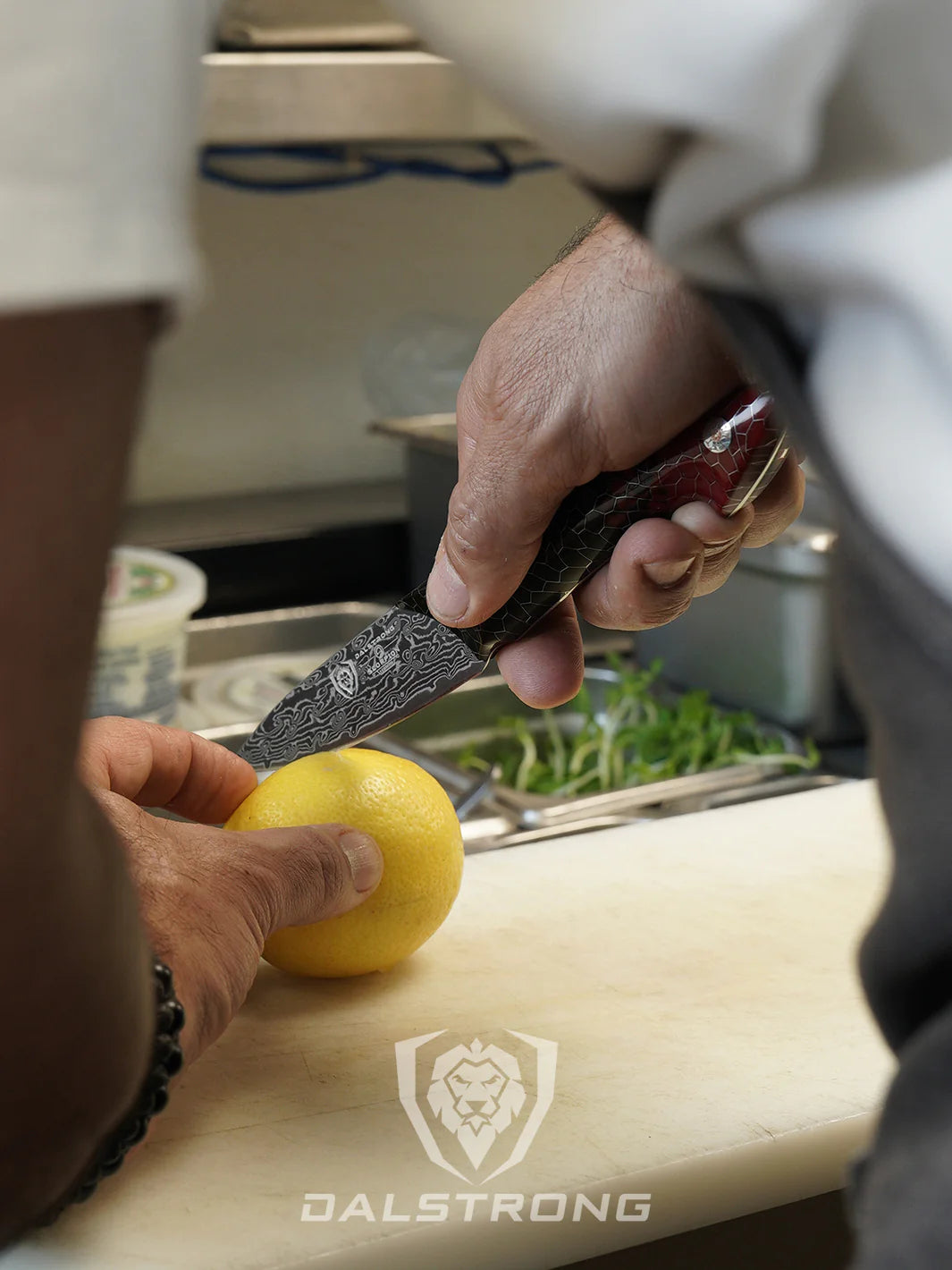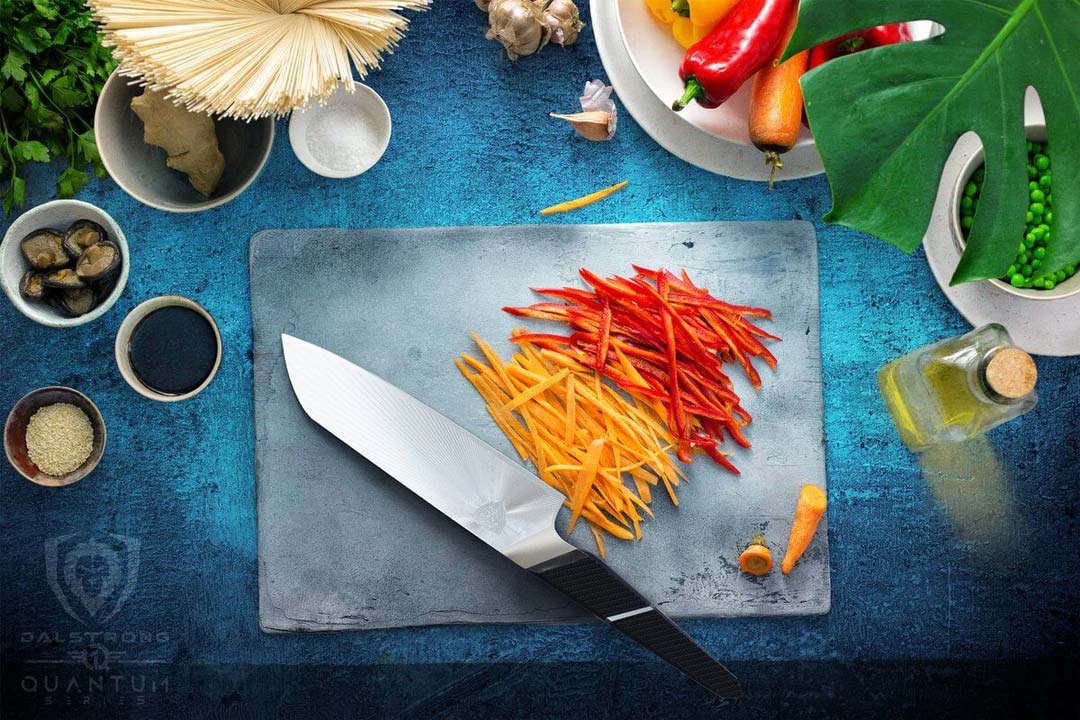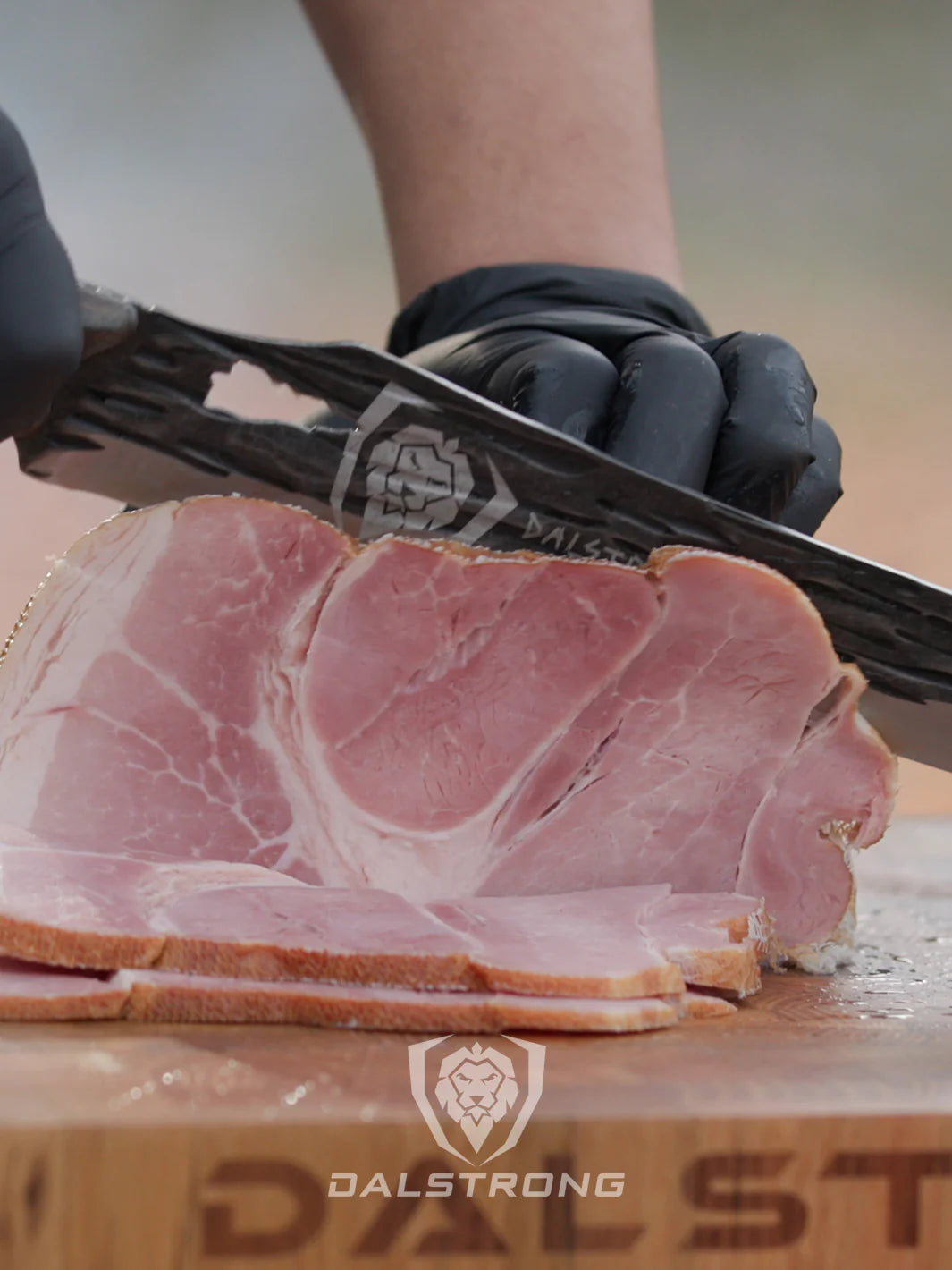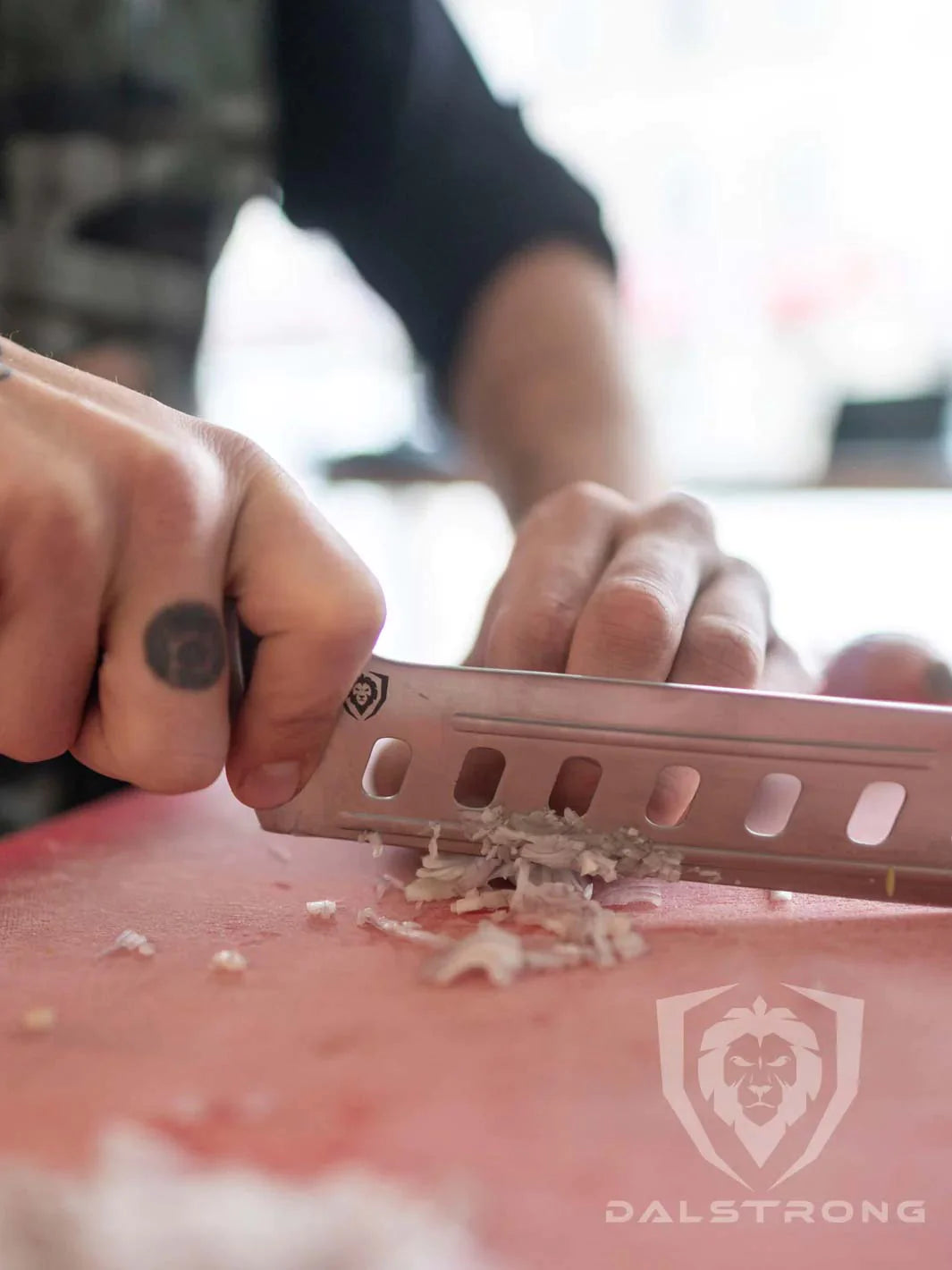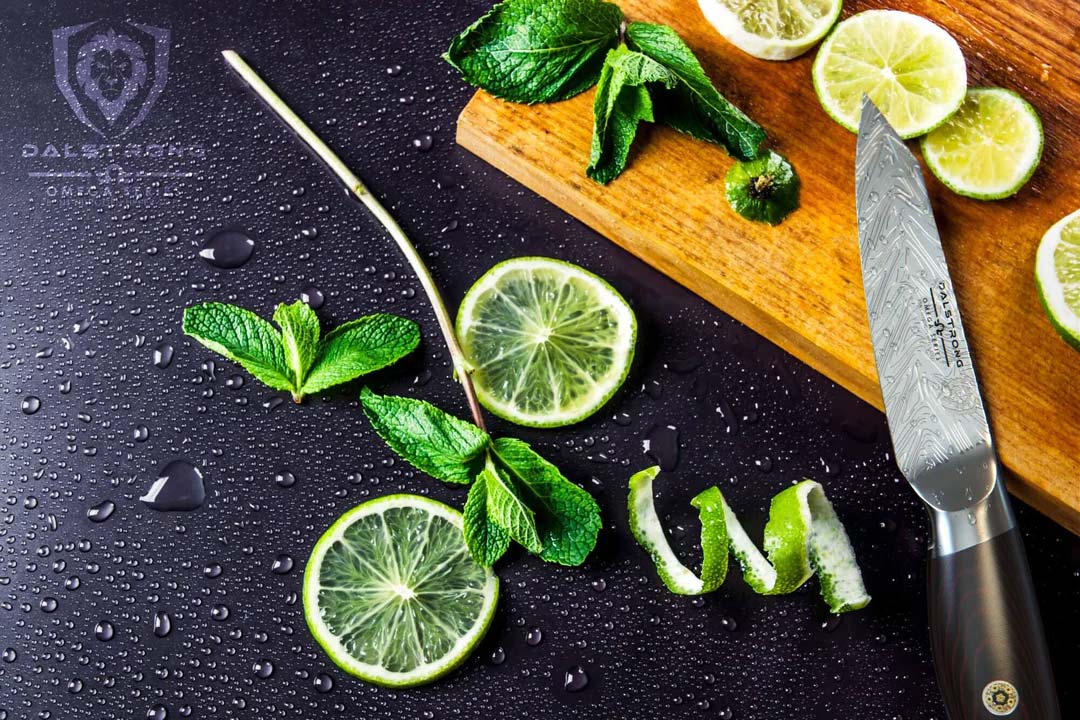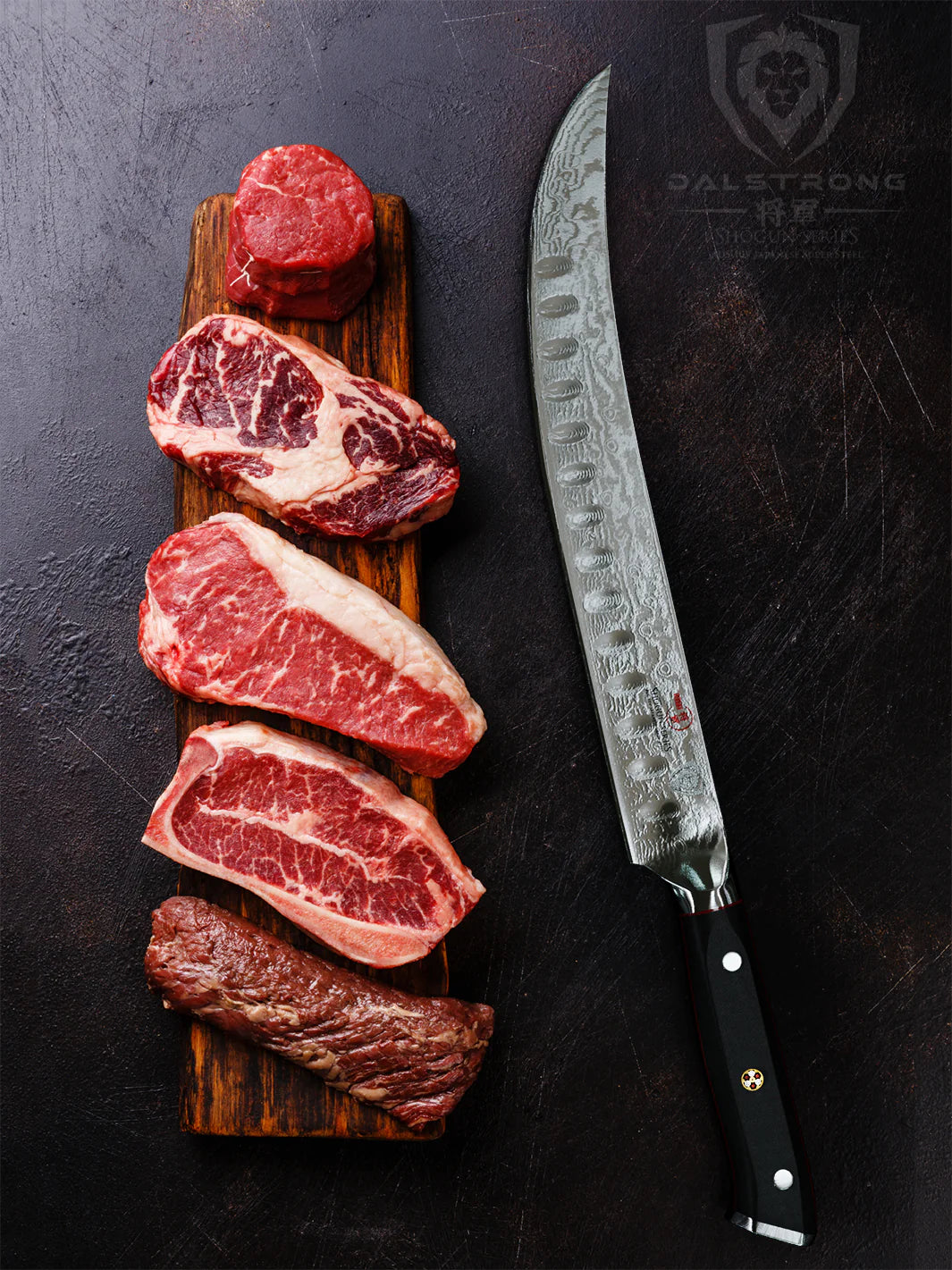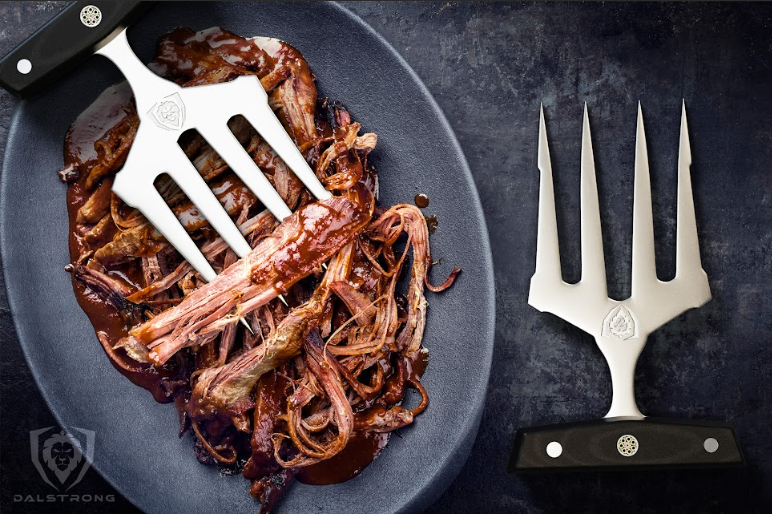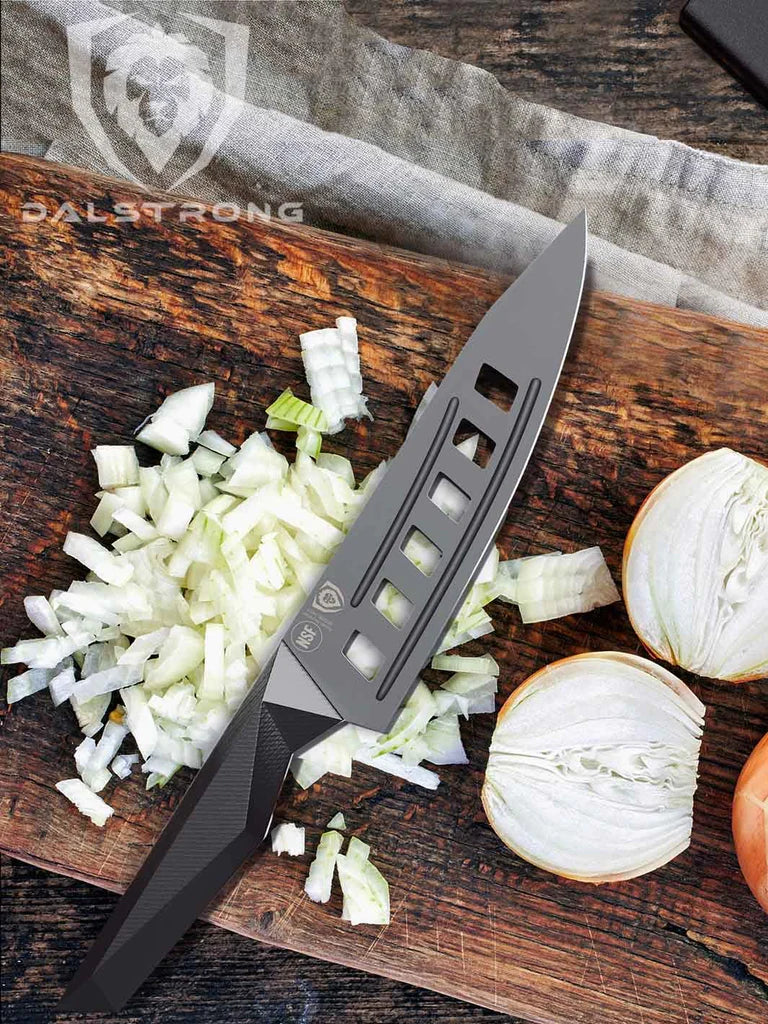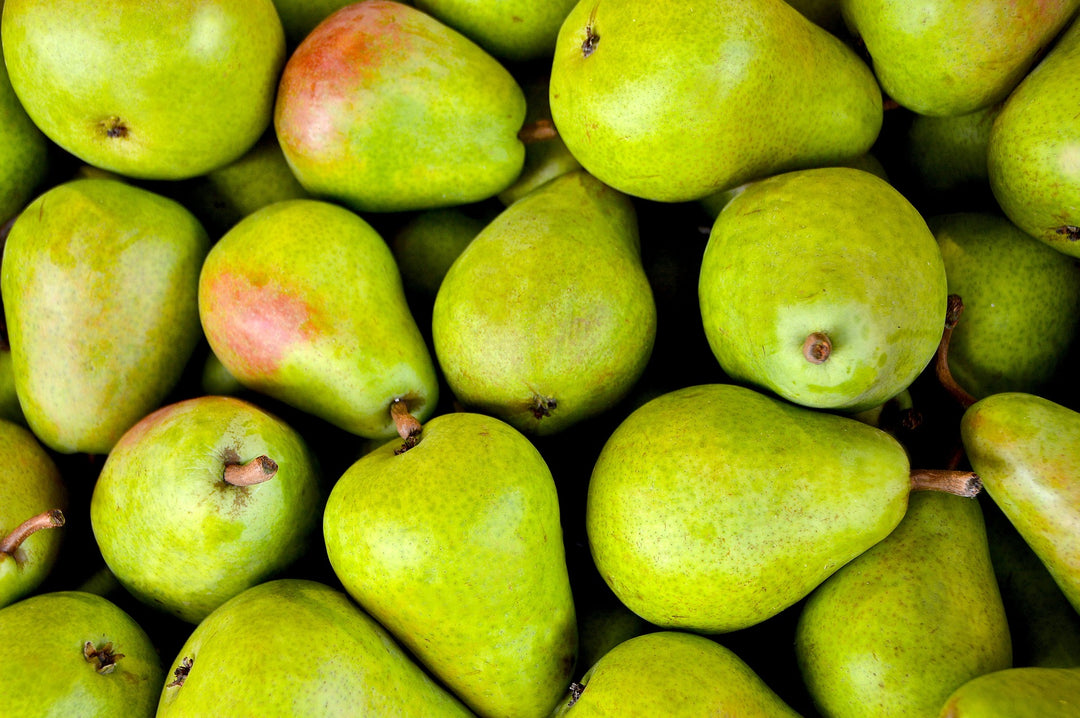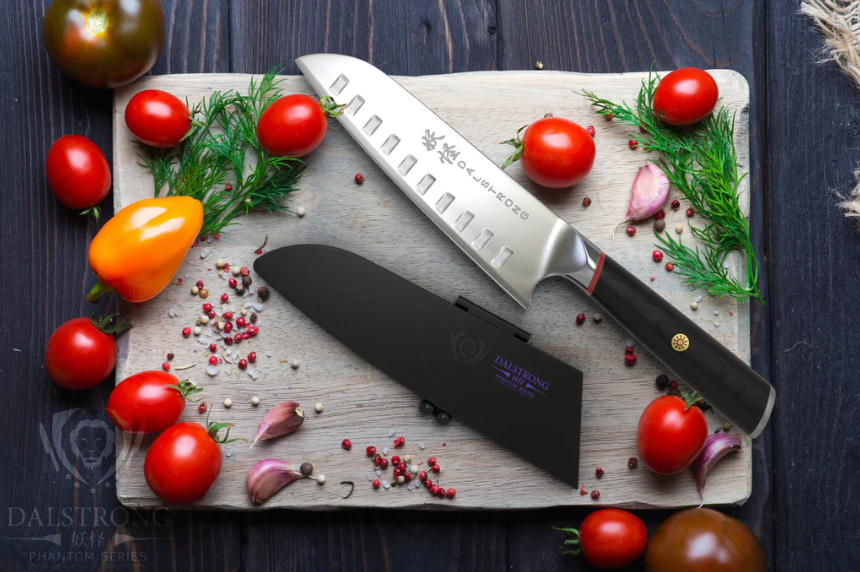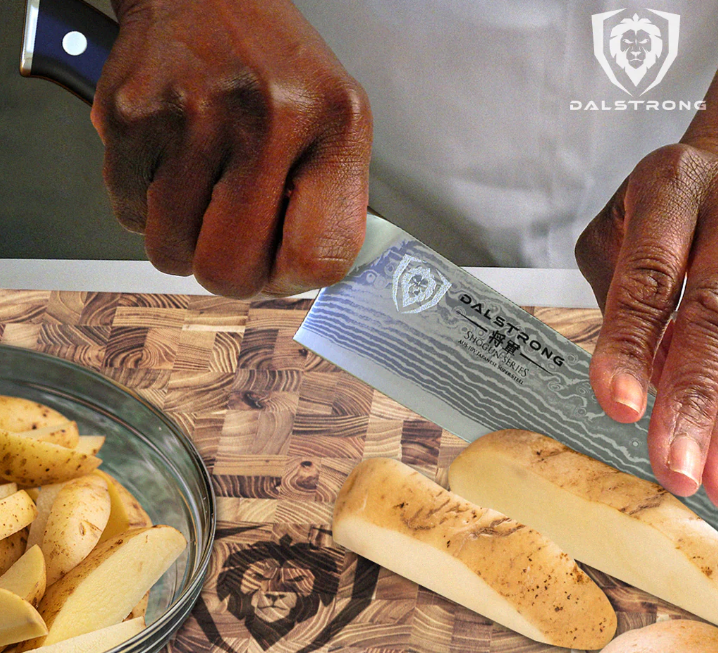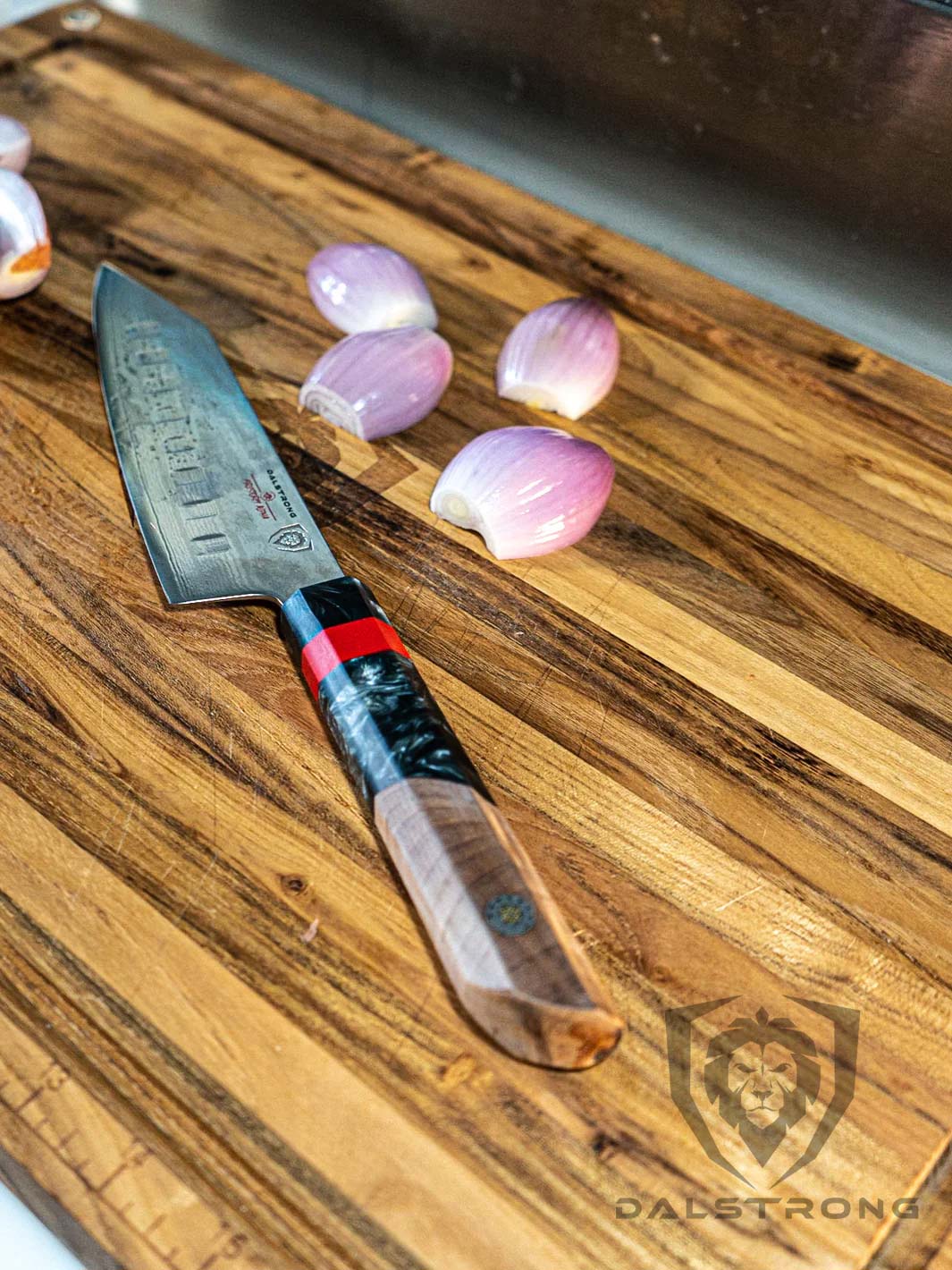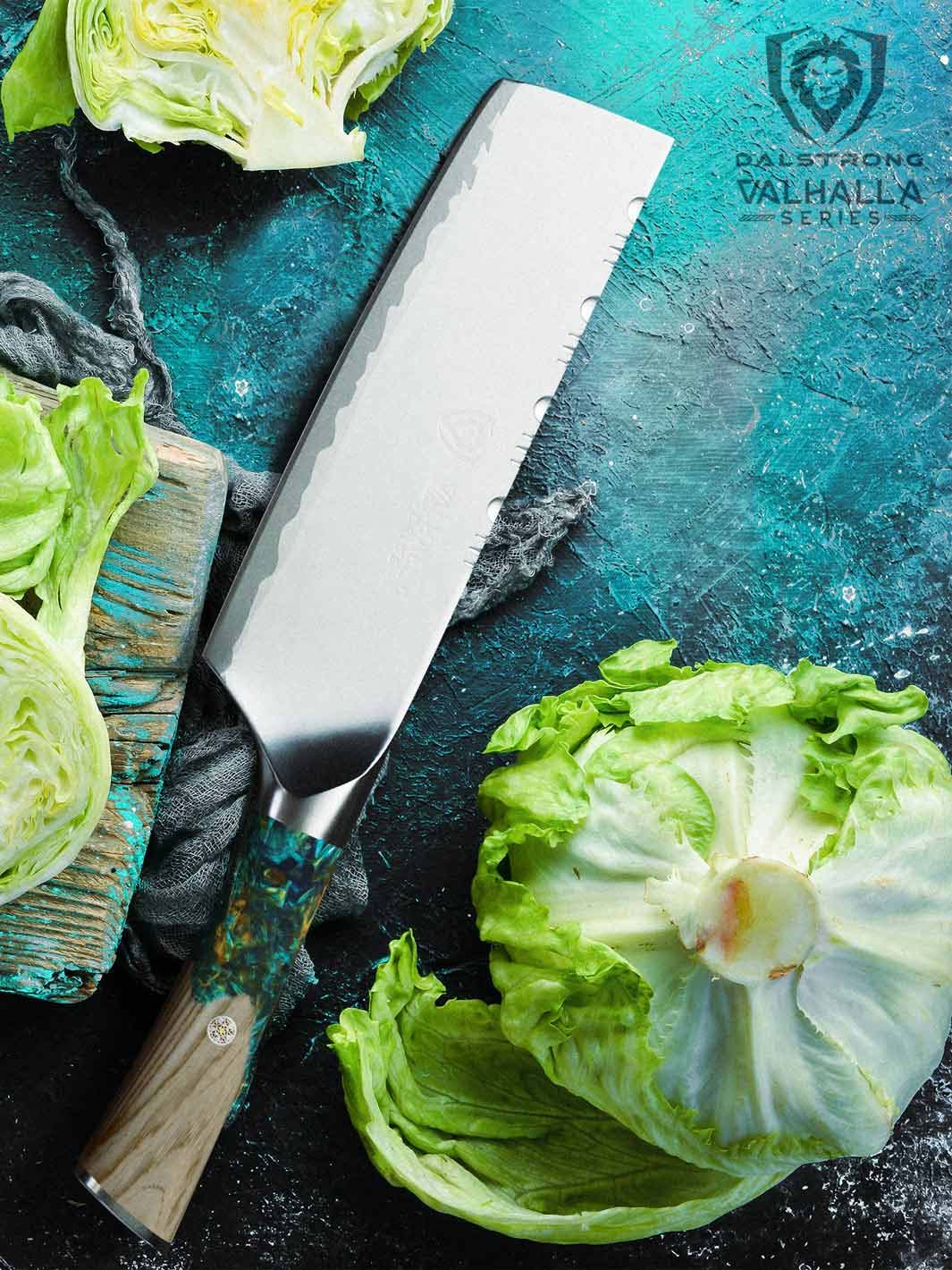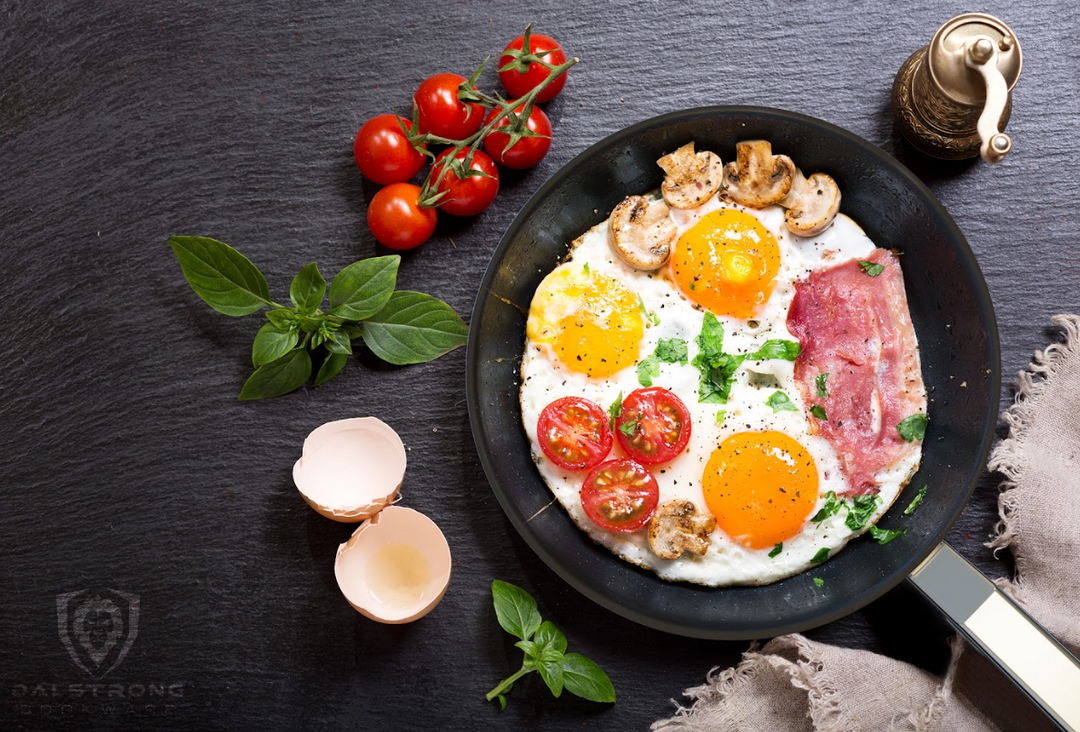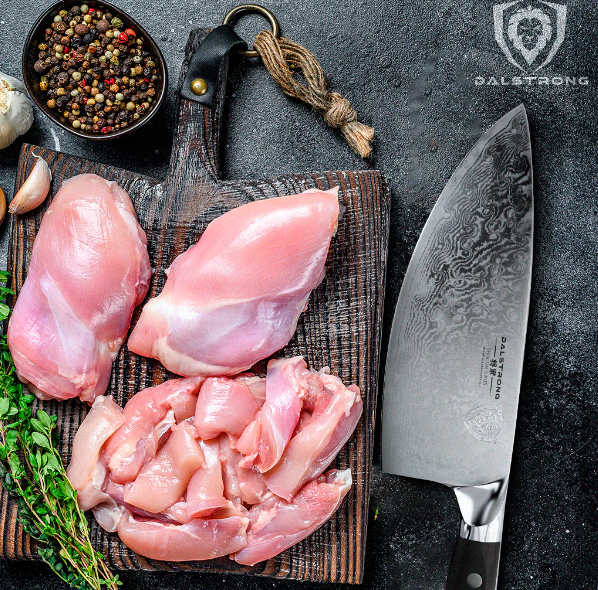Easy Guide On How to Cut Tri Tip
Vanquish Series Chef's Knife 8"
Quick Overview: How to Cut Tri Tip
- Begin with a quality cut of tri tip and make sure it's marbled well for flavor.
- Observe the meat's surface to determine the most natural pattern of muscle fibers, also known as the grain.
- Use a high-quality cutting board for a stable surface during the cutting process.
- Use a sharp chefs knife for clean cuts as it makes the process smoother.
- Slice the tri tip perpendicular to the grain.
- Using the reverse sear method, start by slow-cooking the tri tip and finish with a high-temperature sear.
- Thin slices against the grain direction is the way to go.
- If you're a fan of Texas style Bbq, use wood fire for authentic flavor.
- Whether using a pellet grill, smoker, or air fryer, ensure you have the right tools.
Folks, cooking Texas style Bbq is a personal hobby of mine, so I’m elated to walk you through a quick guide on how to cut tip and what grain direction is. So, let’s dive right into everything; from finding the best cut of meat to cooking it, and mastering the tri tip cutting process!
1. What Is Grain Direction?
Vanquish Series Chef's Knife 8"
Tri tip steaks, one of the best beef cuts, is known for its rich flavour and tenderness, requires careful preparation and serving, and one of the key elements to do this is knowing grain direction. For the ideal cut and ‘perfect first bite’, it’s crucial to understand the idea of grain orientation.
So, time to fire up your imagination. The muscle fibres within the cut of meat is the "grain" of flesh. So, for any chef or home cook who wants to become an expert at preparing tri tip steaks, knowing the direction of the grain is everything. This determines how well a dish turns out, as well as the juiciness and texture.
Understanding which way the muscle fibres go is essential to cut tri tip steaks correctly. "Grain" are the visible lines on the meat that resemble the patterns we see in wood. So, think of these lines in the context of the tri tip cutting process! For the right amount of tenderness, you always want to be cutting against the grain.
And, don’t forget, an essential tool for this procedure is a sharp chefs knife, which guarantees clean and uniform cuts.
2. Guide On Cutting Tri Tip
Gladiator Series Chef's Knife 8"
Here’s everything you need to know about the tri tip cutting process.
Steps:
- Begin your tri tip journey by choosing a high-quality, well-marbled cut to ensure a flavorful and tender outcome.
- Carefully observe the meat's surface to determine the natural alignment of muscle fibers, known as the grain. This step is the key for achieving the desired tenderness.
- Set the stage for precision by using a stable and high-quality cutting board. A secure cutting surface enhances safety and makes the entire process smoother.
- Equip yourself with a sharp chef's knife, a fundamental tool for achieving clean and precise cuts. A sharp knife enhances efficiency and accuracy.
- Maximize tenderness and cut tri tip steaks perpendicular to the grain. This technique is essential for unlocking the full potential of the cut.
- Enhance flavor complexity by employing the reverse sear method. Begin with slow-cooking the tri tip and finish with a high-temperature sear for a delightful texture.
- Aim for thin slices against the grain to ensure a more enjoyable dining experience. Precision in slicing is key to the overall satisfaction.
- For aficionados of texas style Bbq, incorporate wood fire into your cooking process to impart an authentic flavor profile to your tri tip.
- Whether you opt for a pellet grill, smoker, or air fryer, ensure you have the appropriate tools for the job. The right equipment enhances the cooking experience.
Read about the best tips for storing meats, here.
3. Dalstrong Tools You Will Need
Here are the best Dalstrong tools that you will need to cut tri tip to perfection!
1. Chef's Knife 8" | Valhalla Series | Dalstrong
The celestial resin handle on this sharp, Valhalla knife offers durability and a comfortable grip. Complete with a Valhalla-embossed leather sheath, this knife is not only a culinary tool but a testament to your kitchen valor. Channel the might of the gods with each use and bring glory to your kitchen.
PROS:
- This chefs knife is made with 5-layer stainless steel for durability.
- Designed with an elegant design with a striking appearance that is sure to turn heads.
- The handle is robust and sturdy for all the dexterity that you need.
- The knife follows with a leather sheath for protection and durability of your knife.
CONS:
- Some folks prefer stainless steel handles instead of resin.
2. Shogun Series ELITE | Dalstrong
The Dalstrong Shogun Series ELITE 8" AUS-10V chefs knife is the pinnacle of both exceptional functionality and striking design. With its remarkable adaptability and cutting power, this razor-sharp culinary workhorse is the most indispensable kitchen blade. The G-10 Garolite handle provides unparalleled durability and ergonomic control, while the super-steel core guarantees scalpel-like sharpness and edge retention.
PROS:
- Delivering clean, easy cuts with a remarkable 8–12° angle per side, this blade has scalpel-like sharpness.
- A tapered bolster encourages a natural and comfortable pinch grip while offering finger protection and ideal "zero-balance" balancing.
- The G-10 Garolite handle offers a non-slip grip, long-lasting toughness, and extreme resistance to heat, cold, and moisture.
CONS:
- Some folks prefer a more basic design and the magnificent Tsunami Rose blade pattern might not be everyone’s cup of tea.
3. Santoku Knife 7" Frost Fire Series | NSF Certified | Dalstrong
With its triple-threat capability for slicing, dicing, and mincing, the Frost Fire Santoku knife lives up to its name. With remarkably sharp razor edge, this knife captivates with its exquisite beauty and comfort.
PROS:
- Superb sharpness and edge retention, thanks to the 7-layer, high-carbon, high-chromium 10CR15MOV steel.
- The sandblast finish improves the non-stick qualities for easy food release while giving a distinctive "frosted" appearance.
- The aluminium mesh design of the slim, ergonomic white resin handle provides excellent hand control and a tension-free grip.
- This knife offers comfort and agility, thanks to the lightweight construction.
CONS:
- Although some chefs prefer wider angles, they may need to adjust to the 16–18° per side edge angle.
4. Chef’s Knife 8” Gladiator Series NSF Certified Dalstrong
This knife is made with German ThyssenKrupp steel and high carbon amounts for the precision-forged blade. Guaranteeing outstanding sharpness and resistance to wear, this knife's hand-sharpened edge, which is 16–18° on each side, is the perfect balance between resilience and sharpness.
PROS:
- This knife has remarkable robustness for all the balance and dexterity you need.
- Made with a G10 handle that is ergonomic and heat-resistant for a firm and comfortable grip.
- Triple riveted and full tang build for strength and durability.
- This knife includes a Dalstrong PerfectFit sheath that resists water and stains to protect the blade.
CONS:
- The minimalist look of this knife might be a little too plain for those who prefer striking bold desgins.
5. Crusader Series NSF Certified Dalstrong
With a scalpel-like blade and an angle of 16–18°, this German ThyssenKrupp knife ensures clean, precise cuts with outstanding edge retention. This knife's solid steel design is really amazing. To put it mildly, sturdy, robust, and functional. Continue reading, though, if you need a little more persuasion. So, whether it’s smoked chicken wings, or the many smoker recipes you want to try out this fall, this knife can do it all.
PROS:
- Made with German stainless steel blades that is precisely forged for exceptional sharpness and durability and an excellent tool for cutting against the grain with ease.
- The blade design is polished and tapered to increase hardness, flexibility, and decrease friction.
- Designed with a smooth transition between the handle and blade for convenience and easy cleaning.
- Equipped with a magnetic sheath made of Acacia wood for the safekeeping of your knife.
CONS:
- The set might be considered “specialized” which could be intimidating for home chefs just starting out.
4. Frequently Asked Questions
What's the best way to cut a tri-tip?
The best way to cut a tri-tip is cutting against the grain. Identify the direction of the muscle fibers (grain) on the surface and slice perpendicular to these lines. This technique maximizes tenderness, ensuring each bite is flavorful and easy to chew.
How do you find the grain of a tri-tip?
To find the grain of a tri-tip, examine the surface for visible lines that resemble patterns in wood. These lines represent the alignment of muscle fibers. Once identified, cut against or perpendicular to the grain to achieve the most tender slices.
How do you cut a tri-tip brisket?
Tri-tip is not typically referred to as a brisket; however, if you mean a beef brisket, it's generally sliced against the grain after cooking. For a tri-tip, follow the same rule of thumb, identify the grain, and start cutting against the grain.
Is tri-tip a tough cut?
Tri-tip is not inherently a tough cut; in fact, it's known for its tenderness. However, to ensure the best texture, it's crucial to cut against the grain. This minimizes the length of muscle fibers, making each bite more enjoyable.









































































































































































